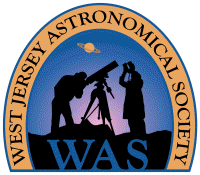|
Mercury 2021 last
sighting May 13 | Weather Links
|
Lunar X
Nova Cassiopeiae 2021
April 21, 2021
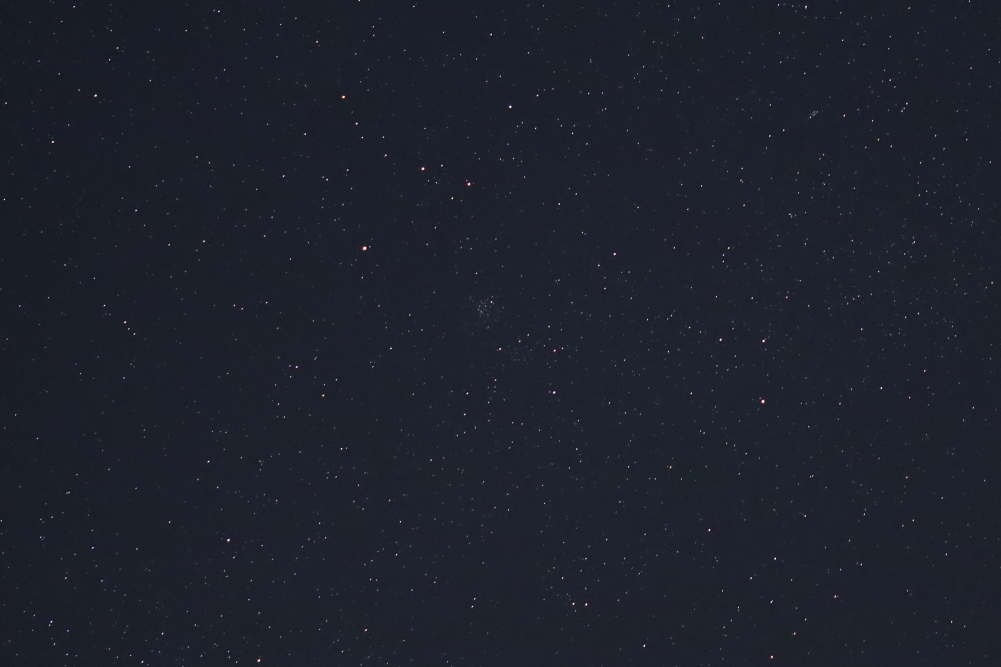
|
Also on the morning of
April 21, 2021, while at Wharton State Forest, I
checked several novae that were
recently discovered when they were around eighth magnitude.
They were
Nova Cas 2021 (V1405 Cas), Nova Sgr 2021 (V6595 Sgr) and
Nova Sco 2021 No. 2 (V1710 Sco). I had already seen Nova Cas
several times from different locations using different optics,
one of which is covered further down this page. This morning,
April 21, it wasn't difficult to see Nova Cas and split the nova from a
close ninth magnitude star using 15x56 binoculars and later, the
88 mm apo spotting scope. It appeared distinctly brighter than
that star just as it did the first time I saw it. In between, it
seemed to have faded such that I saw little or no difference in
brightness between them. Correspondingly, the visual light curve
at AAVSO shows this nova starting in the magnitude 7.5 to 8
range, then dropping to the 8 to 8.5 range, and now brightening
to the 7.5 to 8 range again.
The image above includes Nova Cas and is a single raw frame
captured at 3:47 am EDT on April 21 using a
Canon EOS RP mirrorless digital camera with a Canon 200 mm
f/2.8L lens on a fixed tripod. It was exposed 2.5 seconds at
f/2.8, ISO 6400. It was slightly adjusted with Canon's Digital
Photo professional 4, including cropping to about 48% of the
original width and height, resulting
in a field about 4.9° wide x 3.3° high. Mouseover for labels. |
Nova Sagittarii 2021 No. 2
April 21, 2021
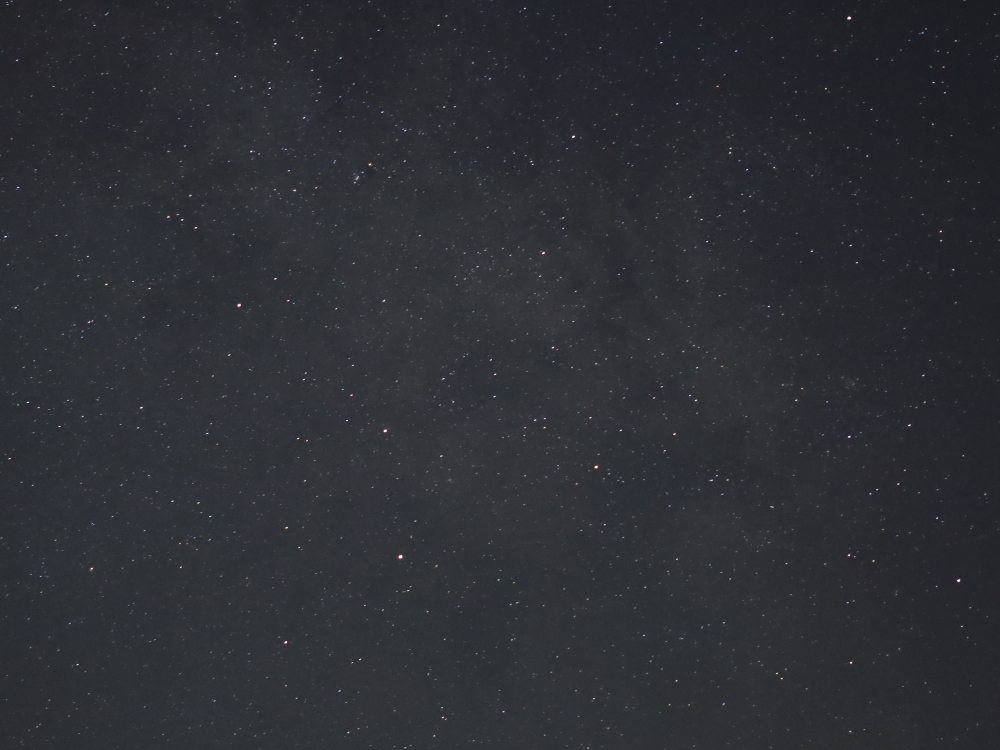
|
Additionally on the morning of
April 21, 2021, at Wharton State Forest, I
looked for
Nova Sgr 2021 No. 2 (V6595 Sgr). I had seen Nova Sgr from
the Pines on April 8 with my 15x56 binoculars and 130 mm apo
refractor. It was just a bit brighter than an adjoining ninth
magnitude star (forming a "double star" much like Nova Cas).
This morning, April 21, I could not find it with the 15x56s or
the 88 mm spotting scope, suggesting there had been significant
fading since April 8. Correspondingly, the visual light curve at
AAVSO shows this nova starting around visual magnitude 8, but
dropping to 11+ on April 21, which would explain my inability to
see it then. Not only is it dim, but there would be significant atmospheric extinction at the low altitude in
Sagittarius.
However, it may be present in the image above, which includes
the Nova Sgr area. Its a single raw frame captured at 3:35 am
EDT on April 21 using a Canon EOS RP
mirrorless digital camera with a Canon 200 mm f/2.8L lens on a
fixed tripod. It was exposed 3.2 seconds at f/2.8, ISO 6400. It
was slightly adjusted with Canon's Digital Photo professional 4,
and cropped to a 4:3 ratio, using about 64% of the
original width x 72% of the height, resulting in a field about
6.6° wide x 5.0° high. Mouseover for labels.
The image below was a further cropped to enlarge the nova area of
the same frame, to 29% of the original width x 32% of the
original height for a field 3.0° x 2.2°. It does show a fleck of light that might
be the dimmed nova. Mouseover for labels. |
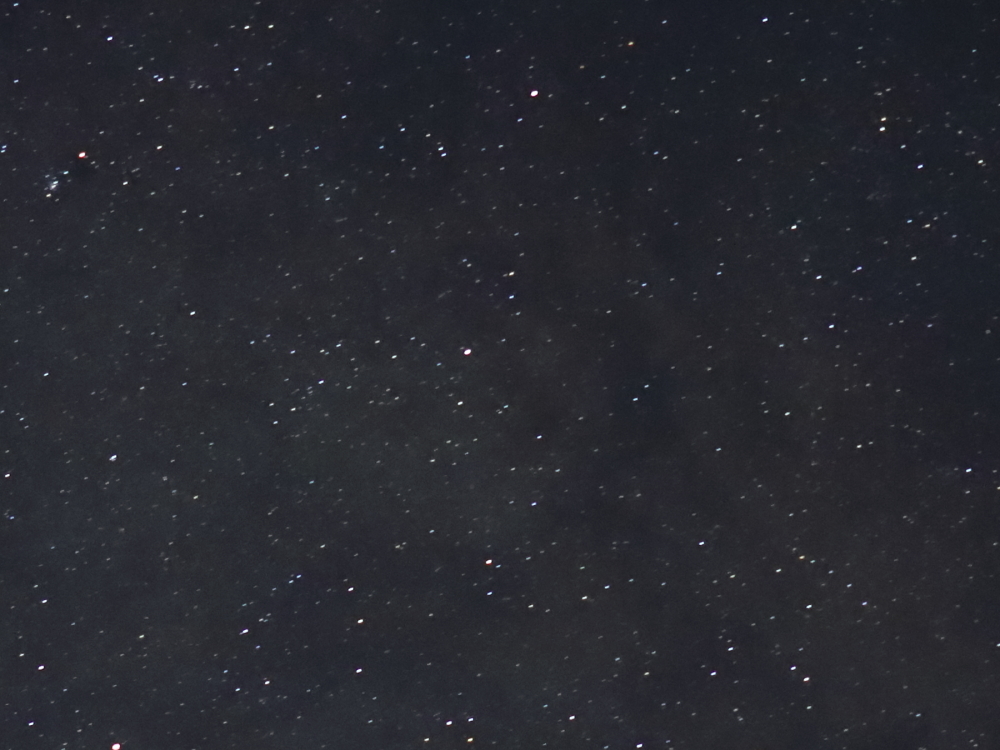
Novae Scorpii 2021
April 21, 2021
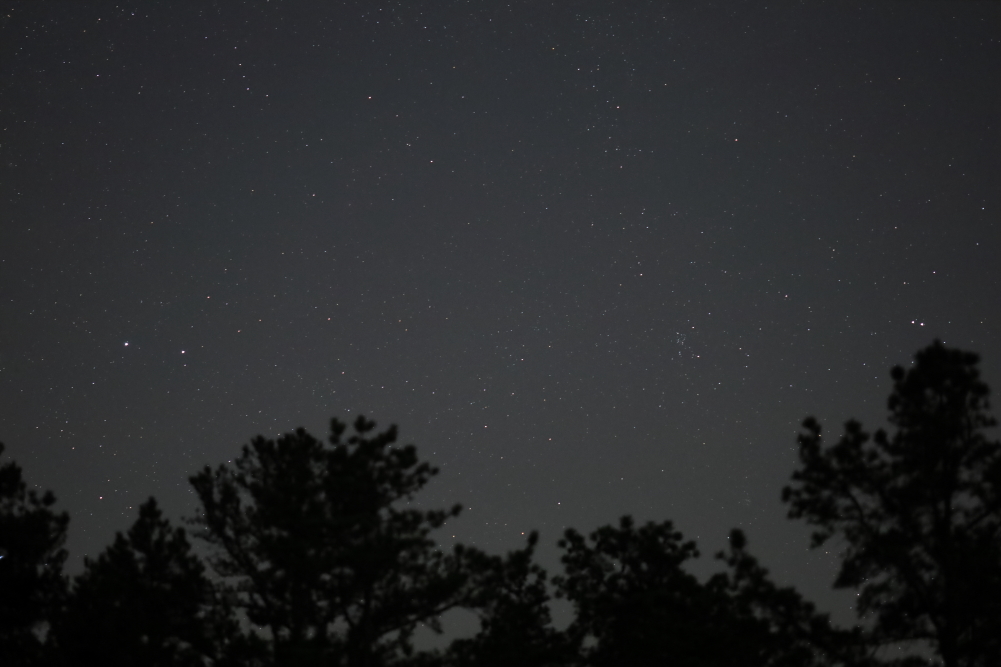
|
Finally on the morning of
April 21, 2021, at Wharton State Forest, I
looked for
Nova Sco 2021 (V1710 Sco). I had not seen Nova Sco before
and I could not find it with the 15x56s or the 88 mm spotting
scope, suggesting there had been significant fading since it was
discovered around magnitude 8. Correspondingly, the visual light
curve at AAVSO shows this nova dropping to magnitude 11+ by
April 21, which would explain my inability to see it. Besides
being dim, there would also be significant atmospheric
extinction at the low altitude in Scorpius where it was barely above the treetops.
However, it may be present in the image above, which includes
the Nova Sco area. Its a single raw frame captured at 3:35 am
EDT on April 21 using a Canon EOS RP
mirrorless digital camera with a Canon 200 mm f/2.8L lens on a
fixed tripod. It was exposed 3.2 seconds at f/2.8, ISO 6400. It
was slightly adjusted with Canon's Digital Photo professional 4,
and uncropped for a field about
10.3° wide x 6.9° high. Mouseover for labels.
The image below was cropped to enlarge the nova area of
the same frame, to 32% of the original width x 36% of the
original height for a field 3.3° x 2.5°. It does show a fleck of light that might
be the dimmed nova. Mouseover for labels. |
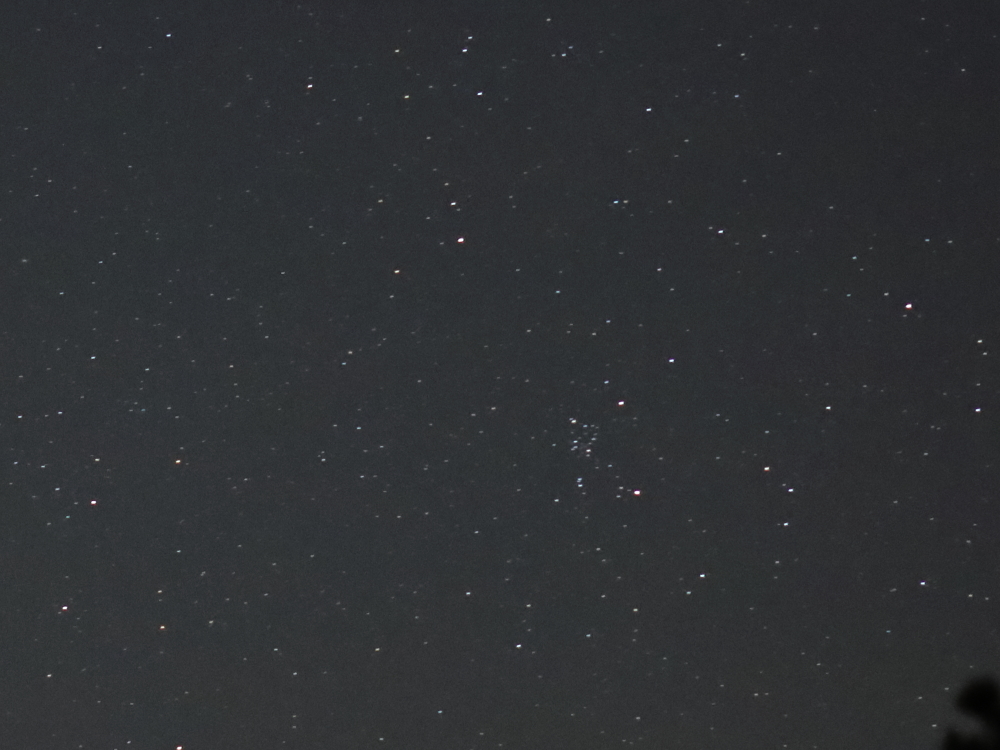
Finding Messier 51
March 22, 2021
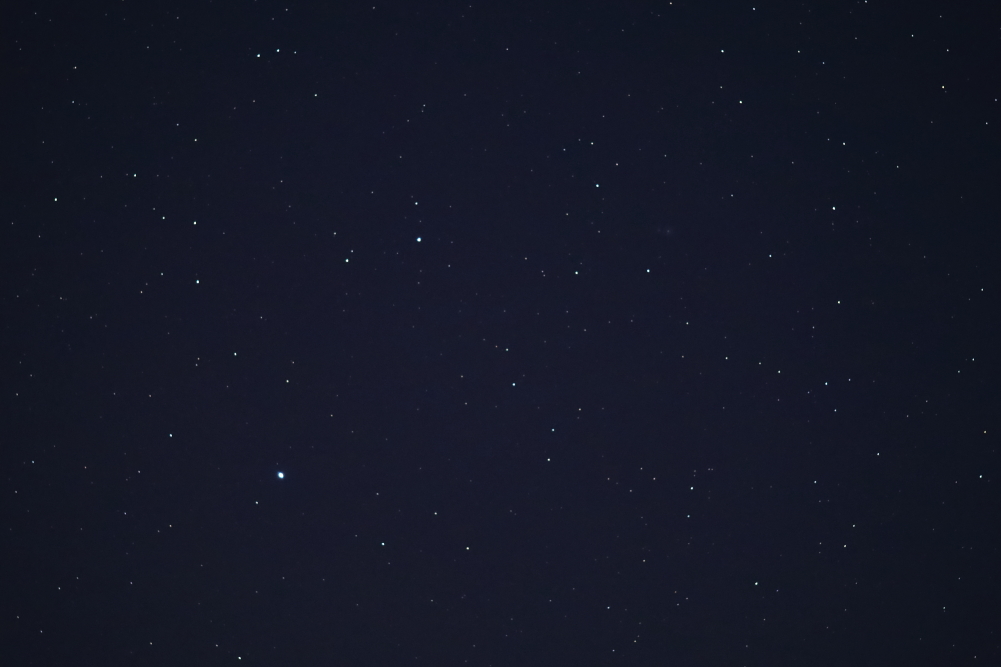
|
This image was captured on
March 22, 2021, from Wharton
State Forest, NJ. It shows the galaxy pair M51, consisting of
NGC 5194 (The Whirlpool Galaxy) and its companion, NGC 5195,
sometimes referred to as M51A and M51B respectively. Messier
himself quaintly referred to them as "two atmospheres," so he
did recognize this object as a pair. It is labeled (on
mouseover) to show an easy way of finding it visually, with
binoculars or a scope by starting at Alkaid, the star at the end
of the Big Dipper's handle.
This snapshot was taken
at
9:40 pm EDT with a Canon EOS RP mirrorless digital camera and a
Canon 200 mm f/2.8L telephoto lens on a fixed tripod. It's a
single raw frame exposed 2.5 seconds at f/2.8, ISO 6400 and 4000 K
white balance. It was mildly adjusted
in Canon's Digital Photo Professional 4 and
cropped to 75% of the original linear dimensions for a field
7.7° wide x 5.2° high. At the time, there was a 64%
illuminated moon at 69.5° altitude in Gemini, so the sky was
somewhat bright, which limited exposure. Nevertheless, the two
lobes can be seen on careful inspection, brighter NGC 5194 is on
the right and dimmer NGC 5195 is on the left. |
Nova Cassiopeiae 2021
March 22, 2021
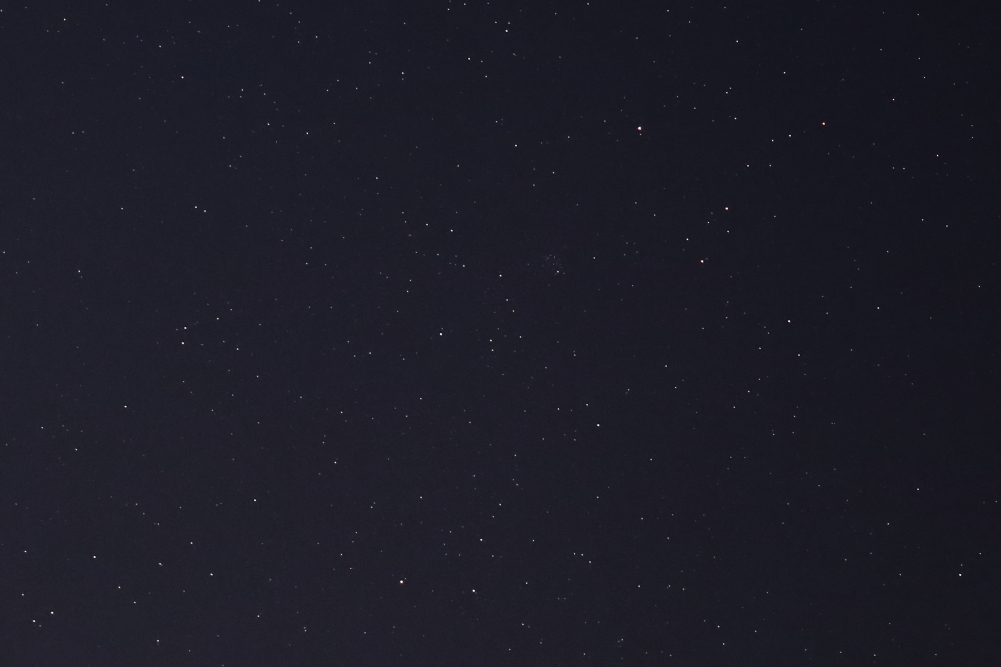
|
Nova Cassiopeiae 2021,
now formally designated
V1405 Cassiopeiae,
was discovered on March 18, 2021, as reported in this
Sky & Telescope online article. Currently around
eighth magnitude, it's a relatively easy target for visual
observers using a small scope or binoculars, with the caveat that
this circumpolar object (for 40°N latitude) is reaching lower
culmination on March nights.
Here's a
SkyTools chart. Update:
Here's a AAVSO visual light curve generated on April 2,
2021.
This image, which includes
the nova, was captured on
March 22, 2021, from Wharton
State Forest, NJ. V1405 Cas is about 6° west-northwest of Caph
(Beta Cas), the second magnitude star at the western end of
Cassiopeia's W-shaped stick figure. This snapshot of
the area was taken
at
9:14 pm EDT with a Canon EOS RP mirrorless digital camera and a
Canon 200 mm f/2.8L telephoto lens on a fixed tripod. It's a
single raw frame exposed 2 seconds at f/2.8, ISO 3200 and 4000 K
white balance. It was mildly adjusted
in Canon's Digital Photo Professional 4 and
cropped to 40% of the original linear dimensions for a field
4.1° wide x 2.7° high.
Mouseover for labels. At the time, the nova was at 18°
altitude in the north-northwest, so it was within the
Philadelphia light dome. In addition, there was a 64%
illuminated moon at 71° altitude in Gemini, so the sky was
relatively bright, which limited exposure. Nevertheless, all
seven stars of the Little Dipper were visible with unaided eyes (albeit, the five
fainter stars required some effort to see). The weather was
relatively pleasant, 42°F with no wind. |
(4) Vesta in Leo
March 22, 2021
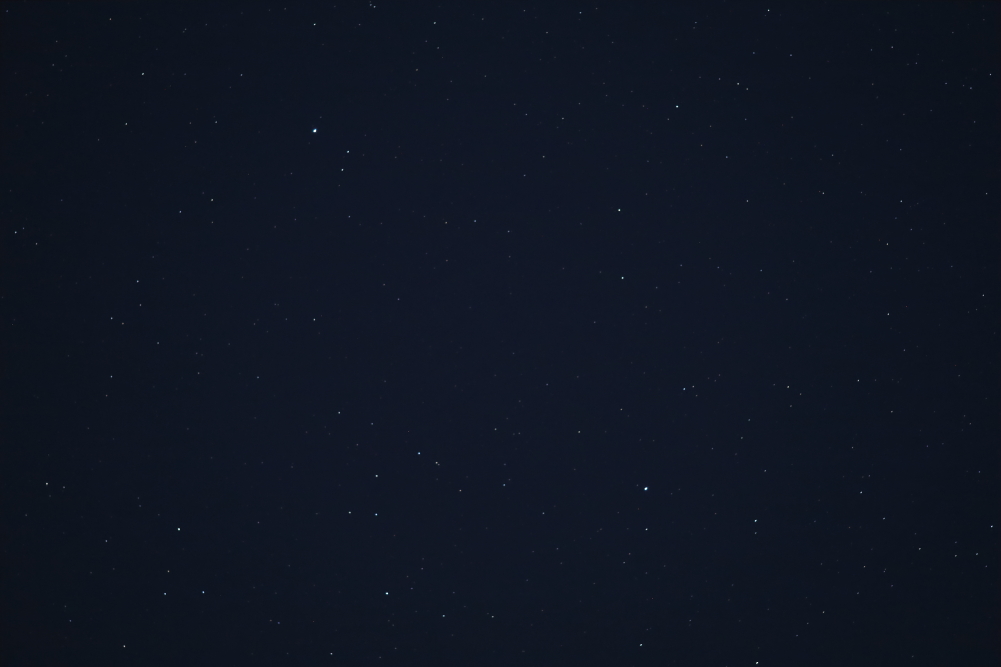
|
This image of the asteroid
(4) Vesta
was captured on
March 22, 2021, from Wharton
State Forest, NJ.
Vesta is now
just west of Leo's hindquarters and is
in retrograde motion heading west. It will be stationary in
mid-April 2021, then resume direct eastward motion. This snapshot was taken
at
9:37 pm EDT with a Canon EOS RP mirrorless digital camera and a
Canon 200 mm f/2.8L telephoto lens on a fixed tripod. It's a
single raw frame exposed 2.5 seconds at f/2.8, ISO 3200 and 4000
K white balance. It was not adjusted and
is uncropped for a field
10.3° wide x 6.9° high.
Mouseover for labels. At the time, Vesta was about 53°
altitude with a 64% illuminated moon in 51° away in Gemini Vesta
recently passed through the two sixth magnitude HD stars,
which provided an excellent reference for the asteroid's
movement. |
Mercury and Jupiter Conjunction
March 5, 2021
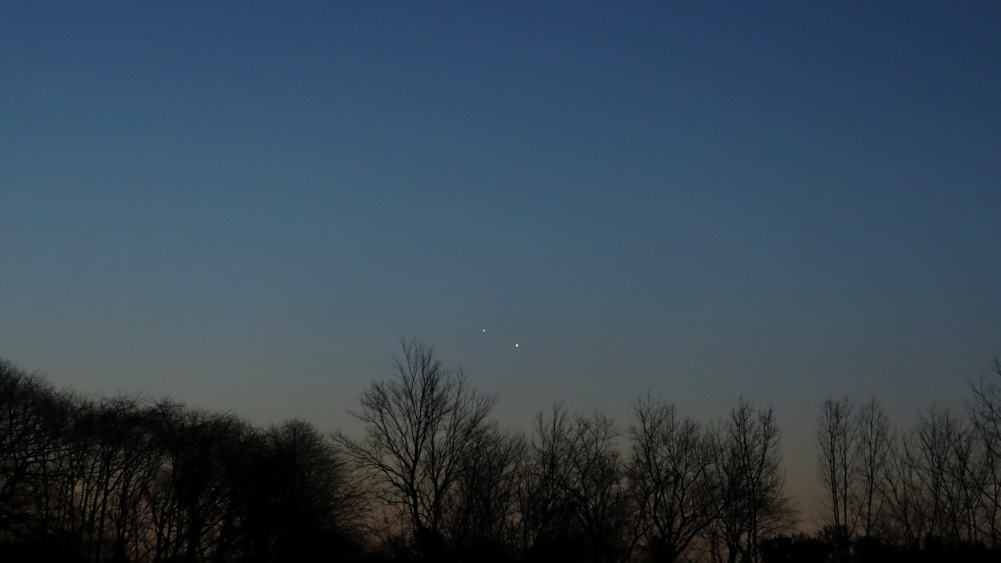
|
The planets
Mercury
and
Jupiter
were just 21 arc minutes apart as they cleared the treetops on
March 5, 2021, as viewed from Swede Run in
Moorestown, NJ. Conjunction in geocentric right ascension
occurred at 2 am EST, astronomical twilight started at 4:57 am
and sunrise would be at 6:27 am. This snapshot of
them was taken
at
5:39 am with a Canon EOS RP mirrorless digital camera and a
Canon 200 mm f/2.8L telephoto lens on a fixed tripod. It's a
single raw frame exposed 1/60 second at f/2.8, ISO 12,800 and 4000 K
white balance. It was slightly adjusted
in Canon's Digital Photo Professional 4 and
cropped to a field
9.6° wide x 5.4° high.
Mouseover for labels. At the time, they were about 3°
altitude in the east-southeast. Mercury was magnitude +0.2 and
Jupiter was -2.0, so Jupiter was almost 8x brighter. Both were
visible with unaided eyes, although with some difficulty in the
brightening twilight. The sky was clear with a third-quarter
moon present. It was chilly, 27°F with a stiff breeze. |
(4) Vesta near Opposition
March 2, 2021
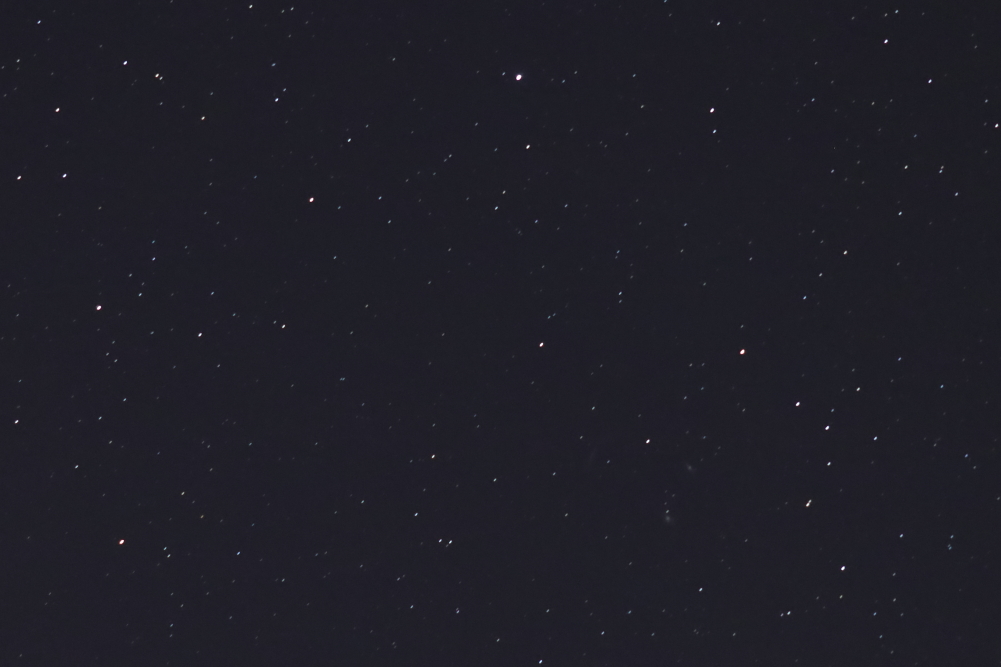
|
The minor planet, or
asteroid,
(4) Vesta
will reach solar opposition on
March 4, 2021, at 1:08 pm EST.
Vesta is not the largest asteroid, but it's the brightest. At magnitude 6.0 to 6.2
now (depending on the data
source), those with keen eyes might be able to spot it without
optical aid from a dark site, but for the rest of us, it's an
easy binocular target in the hindquarters of Leo the Lion.
Here's
a finder chart for March 8 through April 1, 2021. At the
beginning of that period, Vesta is moving about 15 arc minutes
per day (a quarter of a
degree, or nominally half a moon diameter) with respect to
the background stars. By April 1, it will have slowed to about 9
arc minutes per day as it nears the end of its retrograde loop. Bob King posted an online
article at Sky & Telescope about
observing Vesta in March 2021; the article includes a
finder chart (with tick marks at 0 hr UT) that extends into
June 2021 when Vesta passes close to the galaxies M65 & M66.
This snapshot including Vesta was taken
from Wharton State Forest, NJ, on
March 2, 2021, at 9:06 pm
EST with a Canon EOS RP mirrorless digital camera and a Canon
200 mm f/2.8L telephoto lens on a fixed tripod. It's a single
raw frame exposed 4 seconds at f/2.8, ISO 6400 and 4000 K white
balance. It was slightly adjusted in Canon's Digital Photo
Professional 4 and cropped to 58% of the linear original dimensions to better
show the trio of galaxies, M65, 66 & NGC 3628. The resultant
field is 5.9° wide x 4.0° high.
Mouseover for labels.
At Carranza on Monday, March 1,
Vesta and M66 were seen simultaneously with 15x56 binoculars
around 8:15 pm; at the time, they were 2.8° apart. On March 2,
around 9:30 pm, I also observed Vesta with my 88 mm apo spotting
scope at 25 to 60x. Notably, it showed a mild yellowish color,
which is vaguely apparent in the image. I saw Vesta again on
the morning of March 3, at 5:50 am with 8x42 binoculars while I
was out to observe Mercury, Jupiter and Saturn before sunrise. |
Jupiter, Mercury & Saturn
January 10, 2021
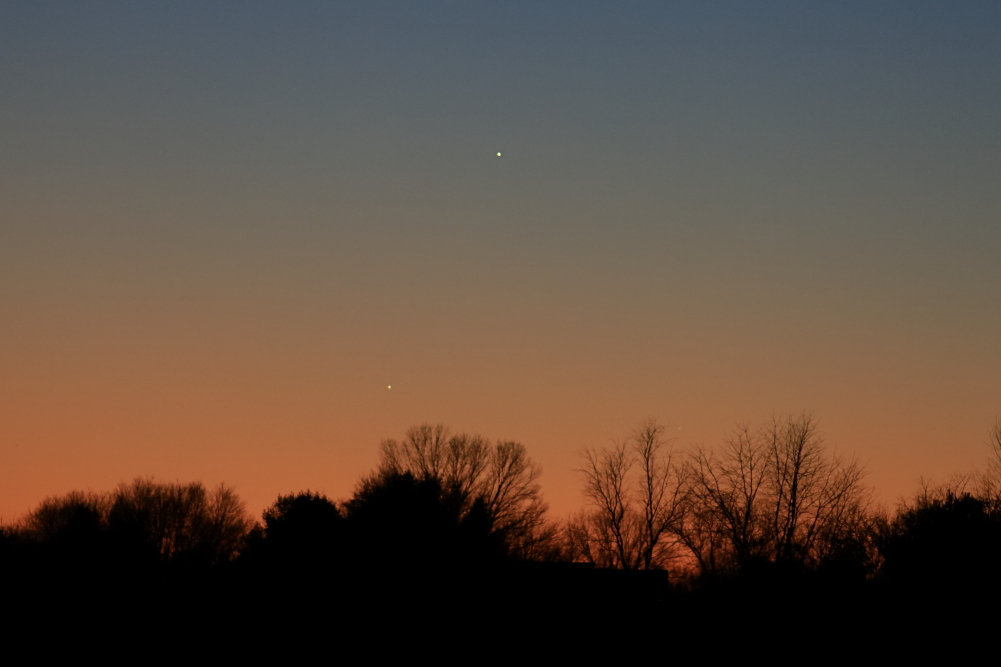
|
Jupiter,
Mercury
and
Saturn formed a
compact, nearly equilateral triangle on
January 10, 2021. As seen here from Swede Run in
Moorestown, NJ, the triangle was roughly 2° on each side with
bright Jupiter (magnitude -2.0) at the upper vertex, 4.0° altitude. Moderately bright Mercury (magnitude
-0.9) was at the lower-left vertex, 2.4° altitude, and dimmer Saturn (magnitude
+0.6) was at the lower-right vertex, 2.1° altitude.
Mouseover for labels.
This snapshot of them was captured at
5:37 pm EST with a Canon EOS RP mirrorless digital camera and a
Canon 200 mm f/2.8L telephoto lens on a fixed tripod. It was
exposed 1/50 second at f/2.8, ISO 1600, then mildly adjusted
in Canon's Digital Photo Professional 4 and
cropped to 64% of the original linear dimensions for a field
6.6° wide x 4.4° high.
In a clear sky, they were also observed
visually. Jupiter and Mercury were initially spotted with 8x42
binoculars at 5:19 pm, then Jupiter was first seen with unaided eyes at 5:22
pm. Saturn was first seen in the 8x42s at 5:26 pm and Mercury was
first glimpsed with unaided eyes at 5:35 pm. Saturn was never seen
with unaided eyes and its visibility was poor even with the binoculars,
comparable to its feeble appearance in the picture. |
Click here
for the previous page.
Click here
for an index to previous SJAstro pages.











